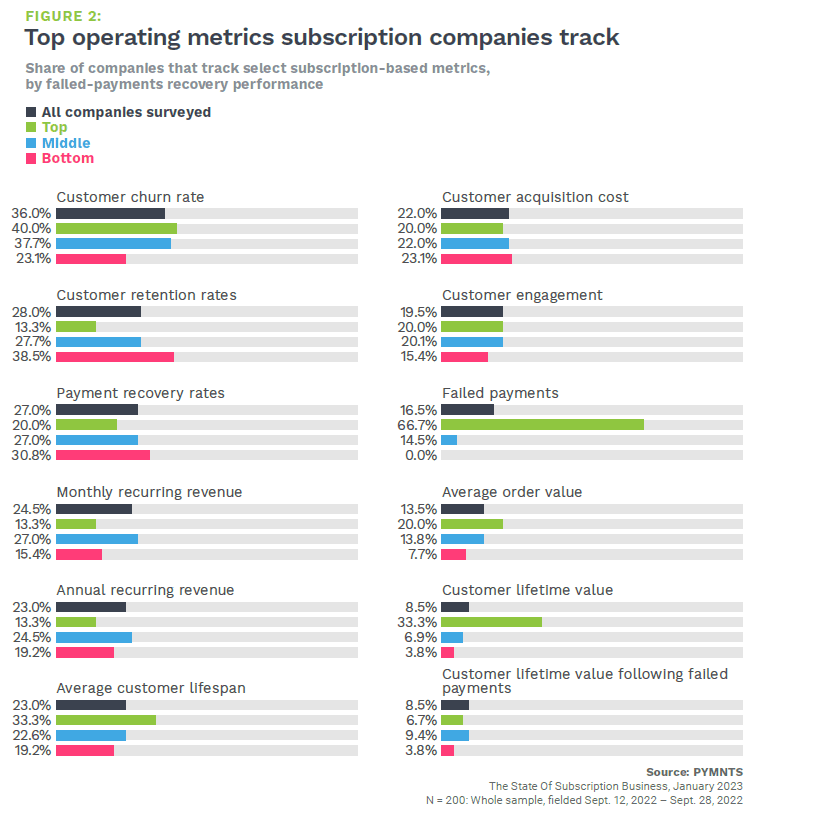Subscription Business Performance Tied to One Key Metric Few Manage

Businesses seeking long-term success are digging into available metric data to keep customers coming back.
Subscription companies have been one of the hardest-hit retail sectors as customers trim “nice to haves” from their budgets. This reality hit home this week, as continued declining sales forced Stitch Fix to announce it would be laying off 20% of its salaried staff and replacing its CEO with the company’s founder, Katrina Lake.
To survive these headwinds, subscription companies may want to place a renewed focus on customer lifetime value (LTV) and its impact on business performance. While customer LTV is important for all consumer-facing businesses, it is especially vital for subscription businesses, as analysis of this metric can help them recover up to 60% of the revenue lost to failed payments. This may represent a 13% bump in overall revenue.
And if recovering 60% of failed payments isn’t incentive enough, subscription providers that track customer LTV are five times more likely to be top performers — defined as those that minimize revenue loss due to failed payments — compared to providers that don’t. Yet PYMNTS’ latest collaboration with FlexPay, “The State of Subscription Business,” found that only 8.5% of subscription firms track LTV metrics.

Failed payments have shown to be a major driver behind involuntary customer churn. However, only 15% of surveyed subscription providers track failed payments primarily to improve customer LTV. By extension, 85% consider failed payments as “the cost of doing business.” However, by following these and related metrics, subscription companies may reduce churn and improve LTV.
In an interview with PYMNTS’ Karen Webster, FlexPay Founder and CEO Darryl Hicks said it’s essential to understand the factors contributing to the success of a subscription business. For subscription companies, those include churn rates and failed payments, which will impact LTV. “There are only three things that can give you an unassailable lead in the marketplace: how you sell, which is all about how you outthink the marketplace; how well you perform and deliver on your promise; and how well you collect the money,” Hicks said.
While economic uncertainty is forcing customers to rethink their subscription services, it’s more important than ever for subscription providers to focus on the right metrics. By tracking customer LTV and its drivers as a customer retention strategy, subscription companies may turn headwinds to tailwinds in the coming year.